A Farmers Market Guide to Greens of Spring
April 3, 2025
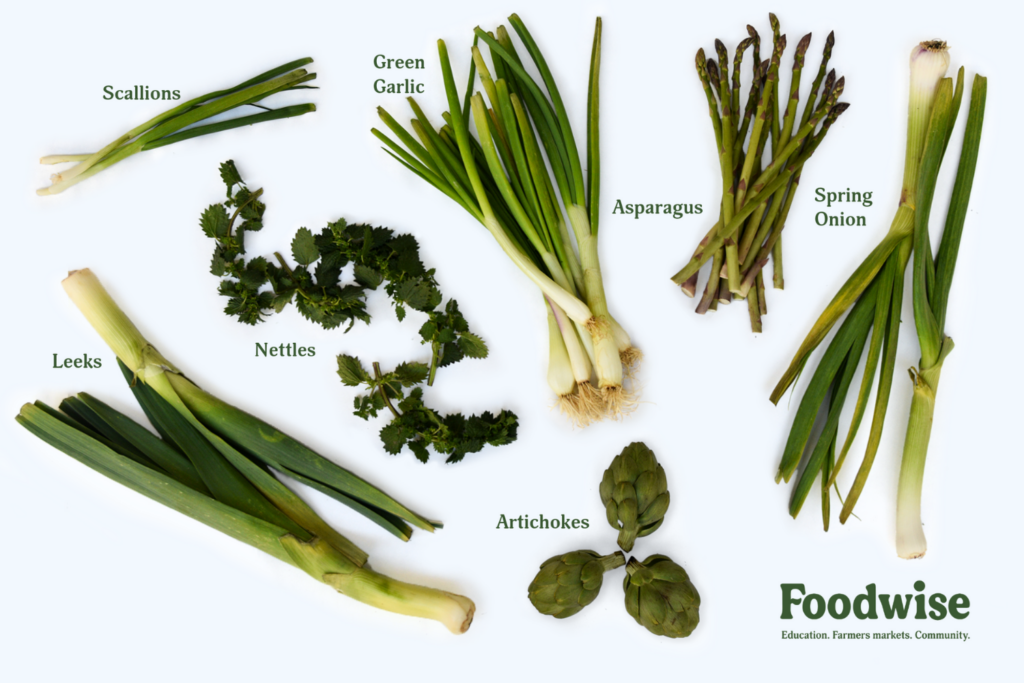
From shelling peas to asparagus, green vegetables are some of the first signs of spring. When the soil warms up, these tender veggies sprout from the ground and offer the best of their light and delicious flavors, especially at the farmers market. Take them home, wash and pat them dry, and enjoy them with a wide variety of recipes, including soups, salads, and dips.
Read on for a guide to some of the greens that you can find at the farmers market when spring is in full bloom. Be sure to visit our Seasonal Spotlight tent at Foodwise farmers markets this month for samples, recipes, and cooking tips for making the most of Greens of Spring, and join us at the Ferry Plaza Farmers Market on Saturday, April 26, for our Spring Festival.
Find Greens of Spring at These Farms at Foodwise Farmers Markets
Avila Farms | Allstar Organics | Blue House Farm | Brooks and Daughters | Dirty Girl Produce | Eatwell Farm | Everything Under the Sun | Four Sisters Farm | GG Farm | Green Thumb Farms | Heirloom Gardens | Iacopi Farms | Lonely Mountain Farm | Marin Roots Farm | McGinnis Ranch | Oya Organics | Star Route Farms | Zuckerman’s Farm
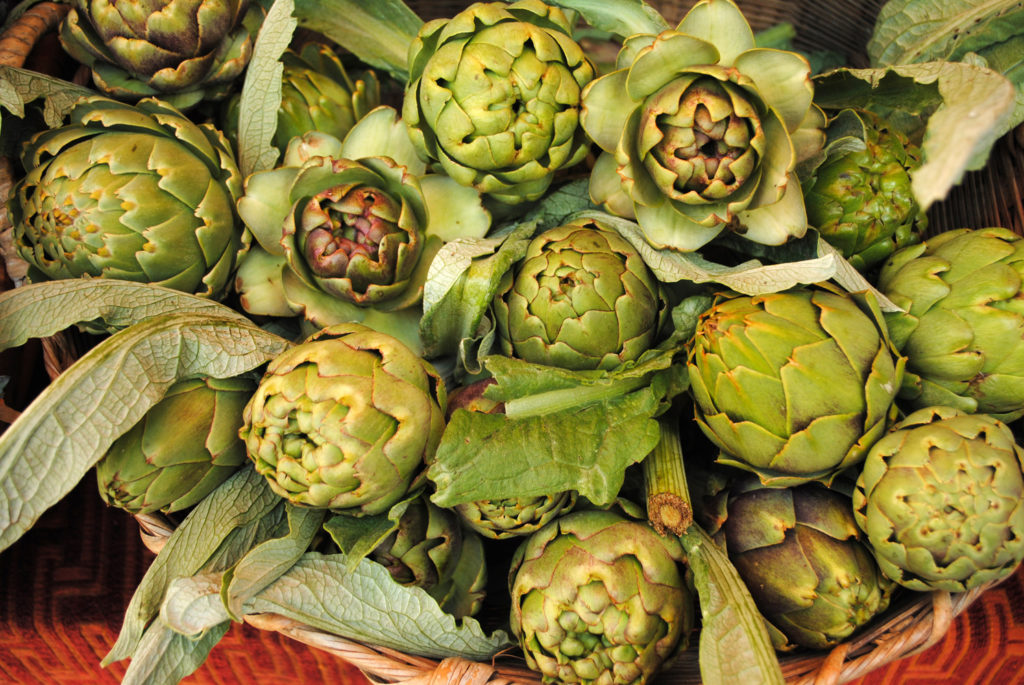
Artichokes are the bud of an inedible thistle flower, which can only be eaten raw after picking it apart: first, the bracts (petal-like leaves) are peeled off, then the choke underneath it is removed, and the fleshy, flavorful heart and tender parts of the leaves are eaten. Artichokes are best grown in Monterey County, where the temperate climate and deep, fertile soil allow them to grow to their best possible flavor. Simply steam them and serve with melted butter.
Recipe to try: Stuffed Artichokes by John Arcudi, Delfina
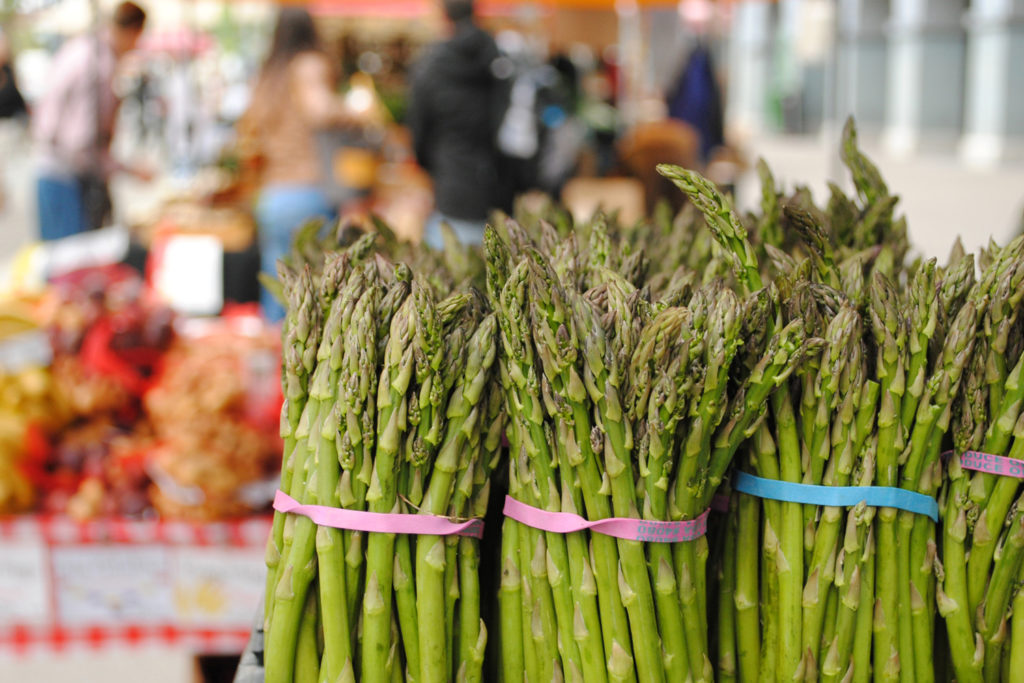
Once soil temperatures reach 50 degrees, asparagus peeks out from the ground. The marshy Sacramento Delta allows California to lead the nation in producing this labor-intensive crop, which needs to be hand-harvested and can take two or more years to sprout. Their tender and edible stalks are actually the shoots of a perennial plant in the lily family. Season them with butter and salt and roast them in the oven for a tender and delicious side to any entrée.
Recipe to try: Shaved Asparagus Salad by Bryant Terry, Vegetable Kingdom
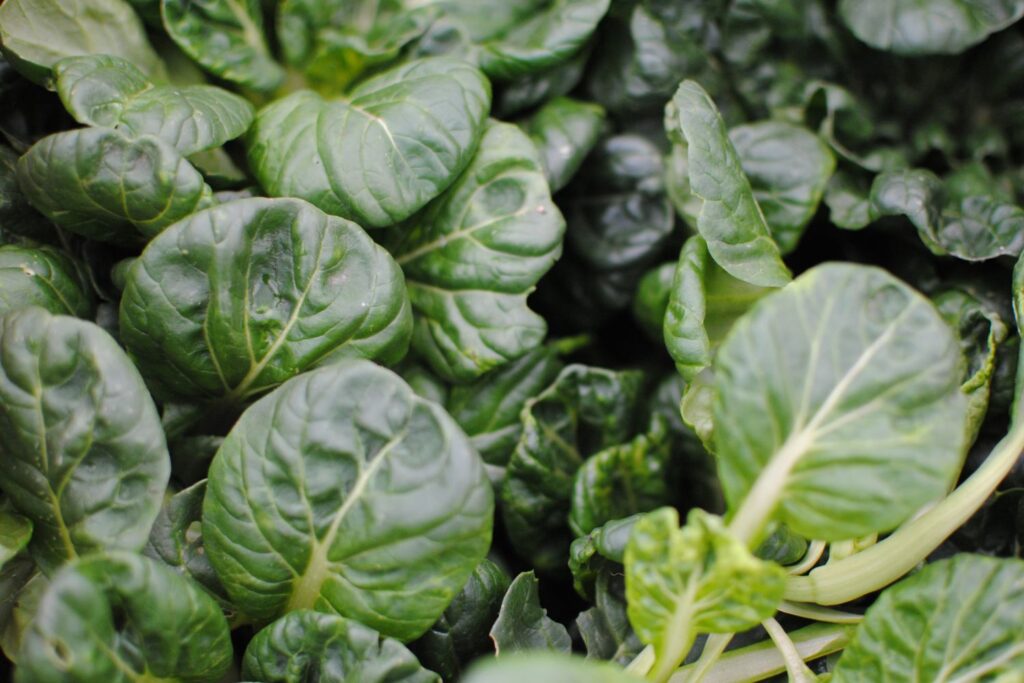
Tatsoi, kale, spinach, arugula, and other greens can be harvested after just a few weeks of growing for a tender, easy topping on your sandwiches or basis for salads. Though their mature counterparts pack more nutrients, baby greens are a good source of essential vitamins, calcium, and potassium. Be sure to wash, dry, and wrap your greens in a paper towel before storing them in your fridge to keep them fresh and vibrant.
Recipe to try: Quinoa Greek Salad by Audrey Reuben, Foodwise Intern
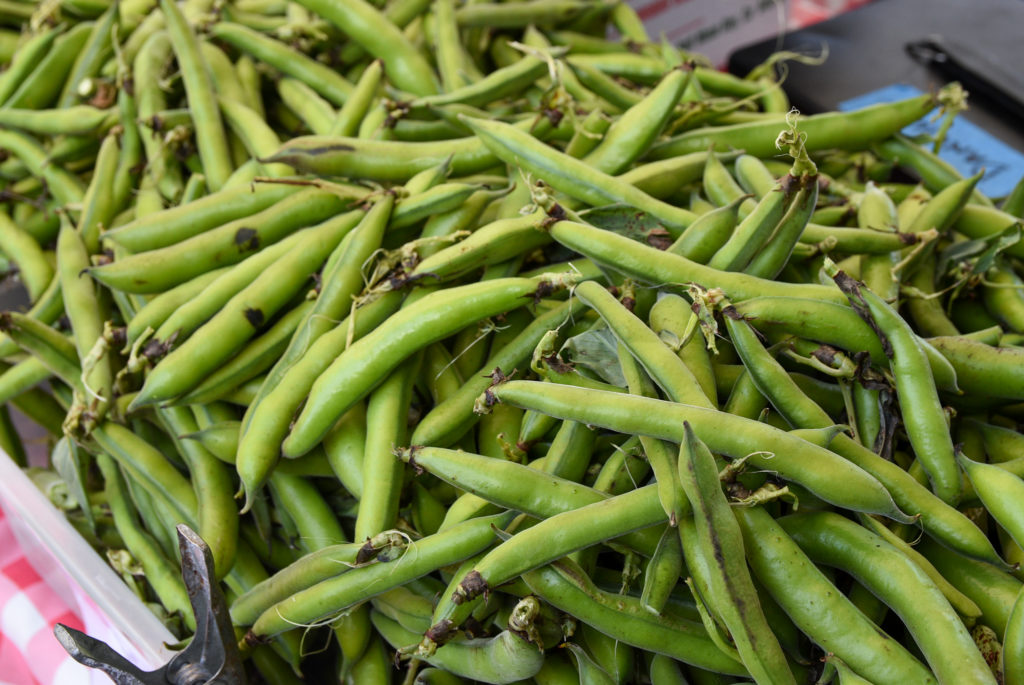
Farmers often use fava beans as a cover crop to replenish soil fertility because of the beans’ ability to fix nitrogen levels in the soil. When shopping at the farmers market, look for young and tender fava beans with bright green pods. Once their pods are removed, beans can be blanched (briefly boiled then transferred to ice water) to peel away the tough skin around each bean. Fava beans give a rich texture to your favorite soups and dips.
Recipe to try: Fresh Fava Bean Crostini by Hoss Zaré, Zaré at Fly Trap
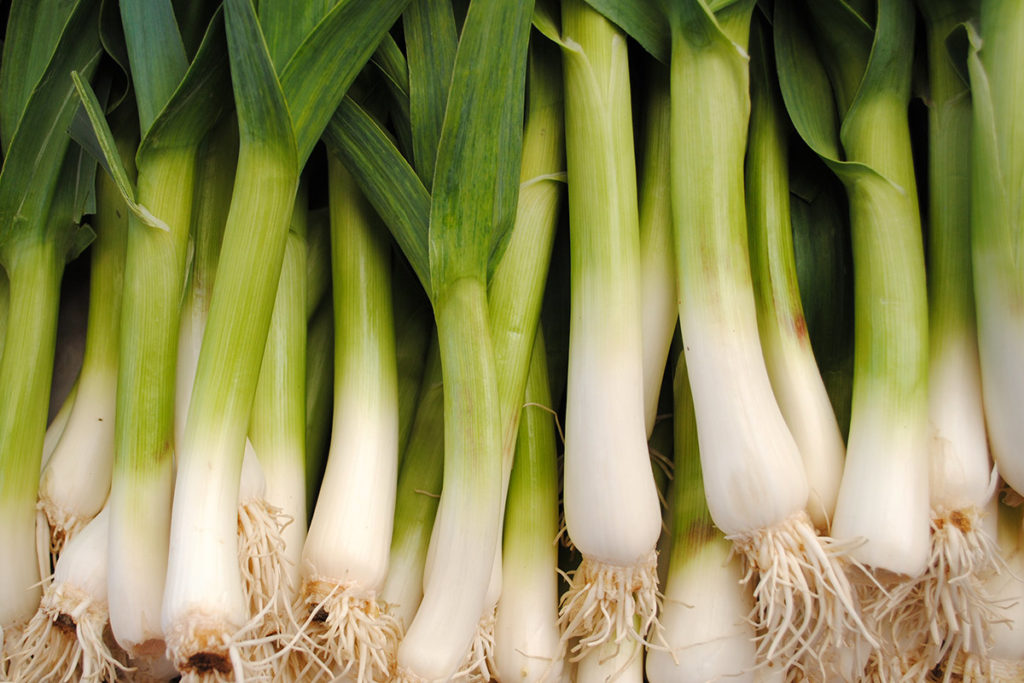
If you harvest your garlic months before it bulbs up and starts to dry out, you’ll have green garlic. Whereas bulbed garlic is typically harvested in the summer, the younger version of this allium is ready at the beginning of spring. Both the green shoot and its white and purple bulb give a milder taste than matured garlic. Store it in your fridge for up to three to five days, and add to your stir-fries and sautés or even eat raw.
Recipe to try: Green Garlic Soup by David Kurtz, Homage
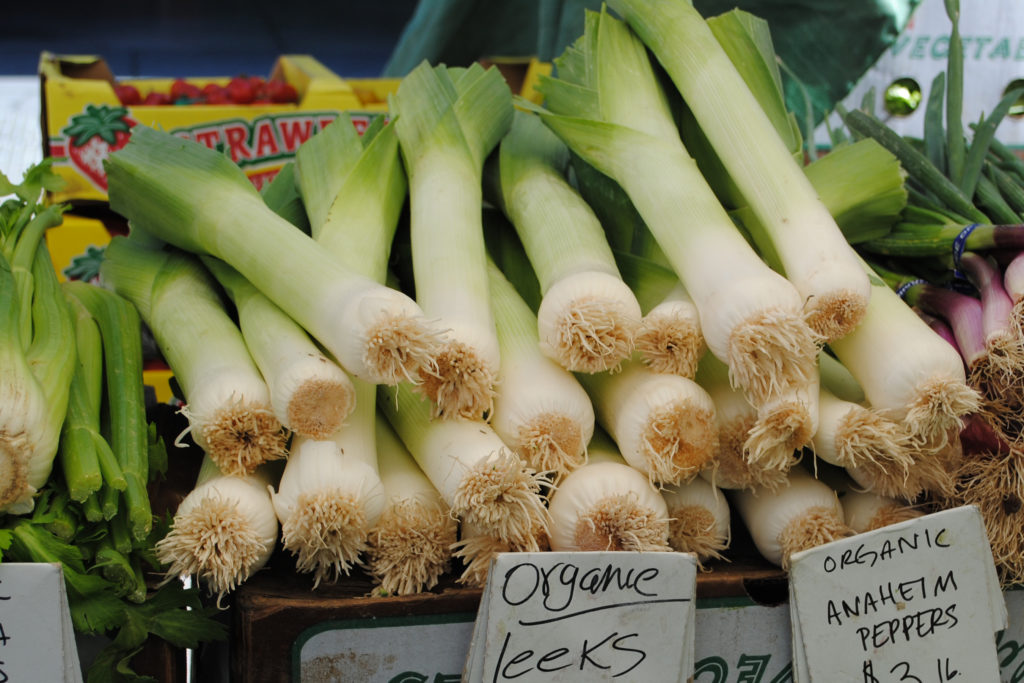
Leeks are also alliums, like onions and garlic. Rather than forming a tight bulb like the onion, the leek produces a long cylinder of bundled leaf sheaths. The white and light green portions of the leek are most often used, as the dark green portion has much less flavor and can be starchy. The tender flavorful part of the stalks is best for adding flavor to soups and stocks.
Recipe to try: Mashed Cauliflower with Leeks, Kale, and Tomatoes by Charles Vollmar, Epicurean Exchange
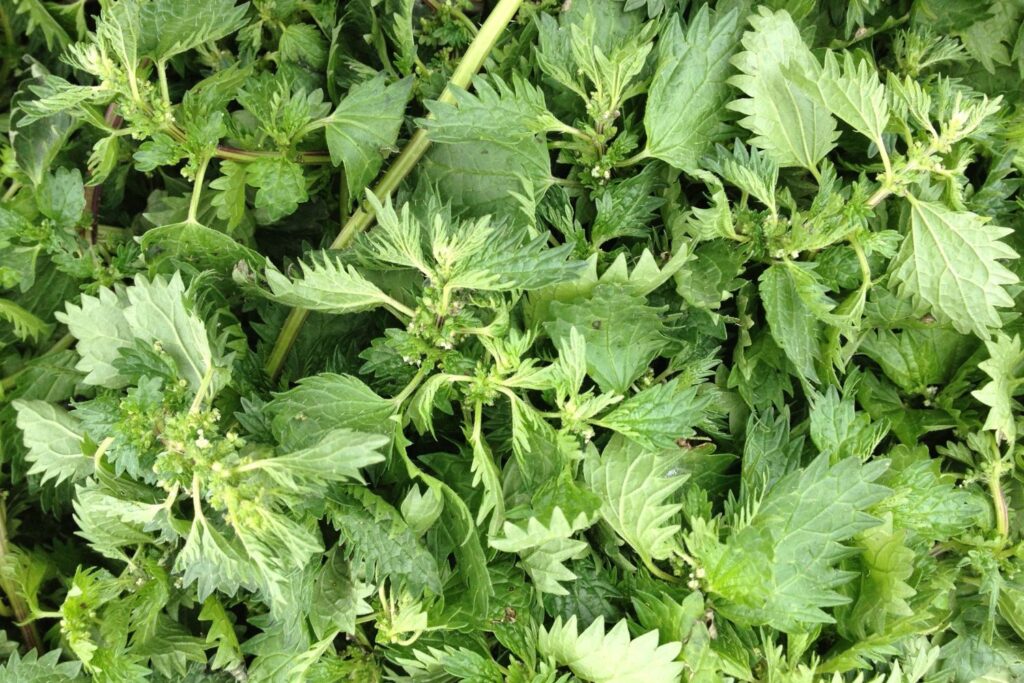
Yes, stinging nettles are edible! A common “volunteer” (aka weed) on farms, nettles have a history of being used for medicinal purposes, testing symptoms of arthritis, hay fever, kidney problems, and more. As food, they make a great substitute for common greens in polenta and pestos, often allowing for a richer flavor. Wear gloves when handling raw nettles to avoid their sting, and give your nettles a quick blanch to remove their thorns. You can also steep them as a tea. Nettles can also be found flavoring certain cheeses, like Yarg and Gouda.
Recipe to try: Nettle Porridge with Butternut Squash and Bacon by Nichole Accettola, Kantine
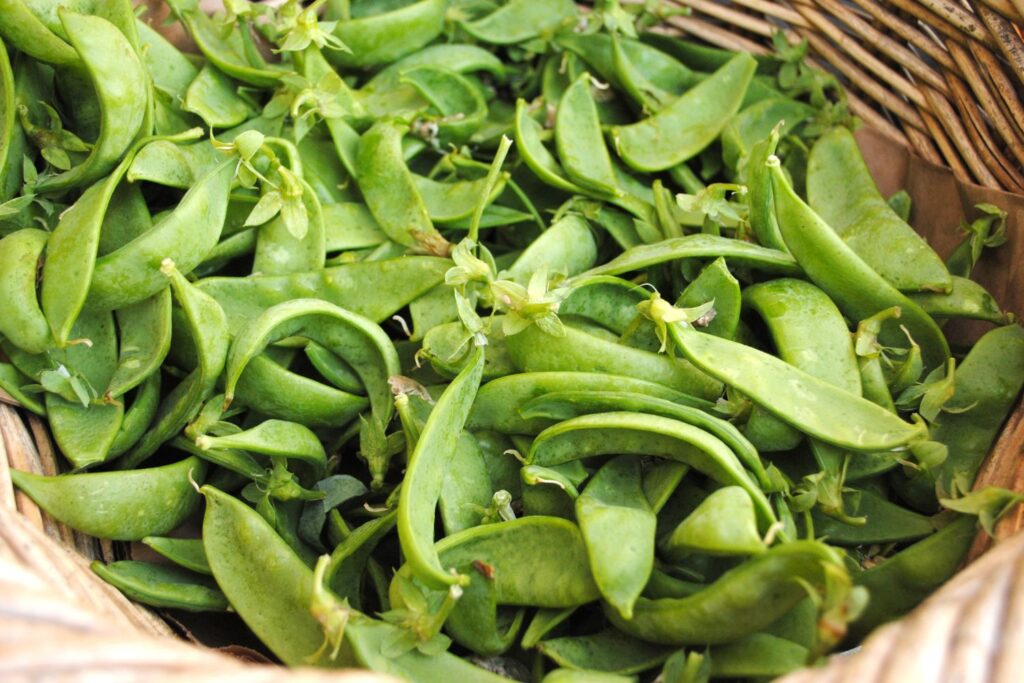
Peas and pea shoots
The leaves of a pea plant, also known as pea shoots, pack a nutritional punch with more vitamin C than blueberries, more folic acid than bean sprouts, and more vitamin A than tomatoes. These bright green, crisp leaves, and their curly tendrils do well as a quick and easy garnish on your favorite meals.
Peas, on the other hand, are much more common. In the past, they were coveted for their dry seeds. Some peas, like English peas, need to be removed from their tough shells. Other varieties, like Sugar Snap peas, can be eaten with the pod. Now, fresh peas can be found in a wide range of cuisines, and an even wider selection of dishes from pot pies to pastas.
Recipe to try: Ricotta Gnocchi with English Peas, Spring Onions, and Pea Tendrils by Sascha Weiss, The Plant Cafe Organic
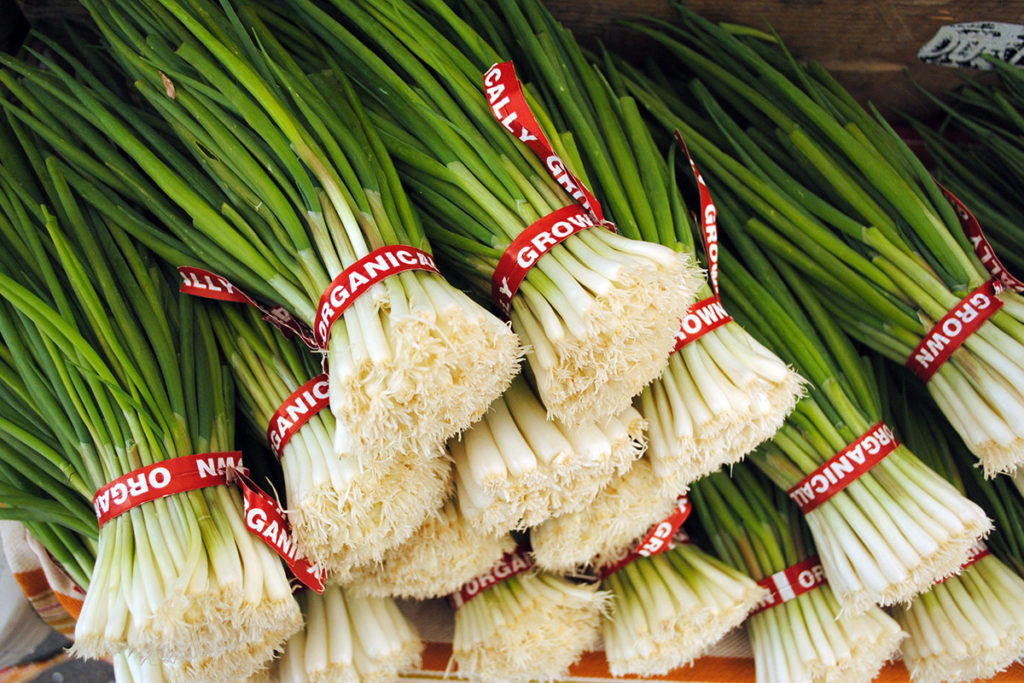
Also known as green onions, these slim and small shoots are harvested before growing into a mature, bulbous onion. Scallions are an even younger and slimmer version. Slice them thin on a bias for a delicious garnish on warm and savory dishes, though they can be used in any recipe that asks for onions to produce a milder flavor. Both parts of the scallion can be enjoyed raw or cooked given their mild taste.
Recipe to try: Herbed Tofu Dumplings with Scallion Nettle Ginger Oil by Henry Hsu, Oramasama Dumplings

Sprouted seeds and microgreens can be grown in your home from the seeds of grains, legumes, herbs, and more, or found at the farmers market. These tiny and easy-to-digest forms of your favorite vegetables, such as broccoli and radishes, have been shown to have a higher mineral and vitamin content than ungerminated seeds and some mature vegetables.
Recipe to try: Spring Soba Salad with Creamy Sesame Dressing and Seasonal Vegetables, by Shaun King, PABU Izakaya
Seasonal Spotlight
Foodwise’s Seasonal Spotlight program shines a light on the best produce that California farms have to offer at our farmers markets. Join us for free samples, cooking demos, and festivals to celebrate a different peak-season produce item each month. See upcoming events.
Topics: Produce guides
